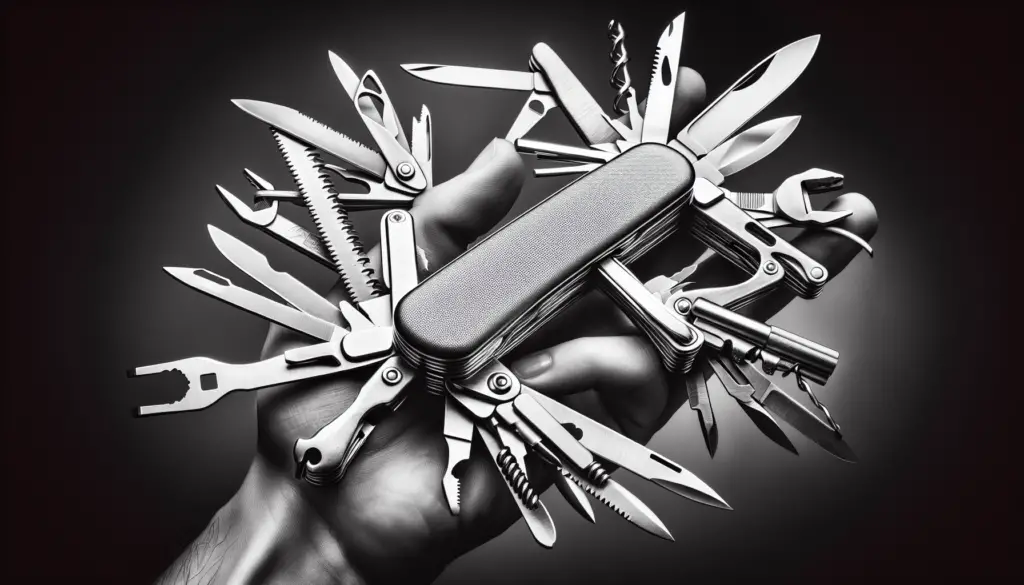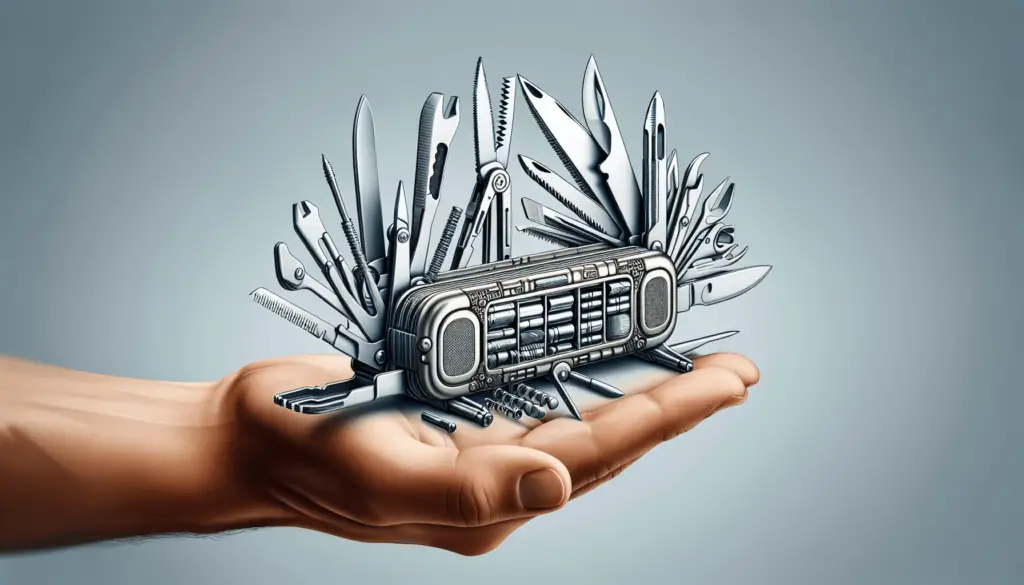Welcome to a comprehensive guide on how to create a portable and efficient prepper’s toolkit. In today’s uncertain world, being prepared for any emergency or disaster is essential. By putting together a well-thought-out toolkit that is compact, versatile, and tailored to your specific needs, you can ensure that you are always ready to handle any situation that comes your way. From first aid supplies to tools for shelter-building and food procurement, we’ll show you how to assemble a toolkit that will give you peace of mind in any crisis.
Have you ever wondered how to create a portable and efficient prepper’s toolkit?
When it comes to being prepared for unexpected situations, having a well-equipped prepper’s toolkit can make all the difference. Whether you’re facing a natural disaster, power outage, or any other emergency, having the right tools and supplies on hand can help you stay safe and comfortable. In this article, we’ll walk you through how to create a portable and efficient prepper’s toolkit that you can easily take with you wherever you go.

Assess Your Needs
Before you start putting together your prepper’s toolkit, it’s important to first assess your needs. Think about the types of emergencies or disasters you’re most likely to encounter based on your location and climate. Consider factors such as the number of people in your household, any specific medical needs, and the duration of time you may need to be self-sufficient. By understanding your unique situation, you can better tailor your toolkit to meet your specific needs.
Make a Checklist
Once you have a good understanding of your needs, it’s time to make a checklist of all the items you’ll need in your prepper’s toolkit. This checklist will serve as a guide to help ensure you have all the essential tools and supplies on hand when you need them. Be sure to include items such as food, water, first aid supplies, tools, and personal hygiene items. Consider how long you may need to survive without access to outside resources, and make sure your toolkit is equipped accordingly.
Organize Your Toolkit
Organization is key when it comes to creating a portable and efficient prepper’s toolkit. Consider using containers or bags to keep your supplies organized and easily accessible. Label each container or bag with its contents so you can quickly find what you need in an emergency. Keep similar items grouped together, such as food items, first aid supplies, tools, and so on. This will not only make it easier to find what you need quickly but also help you keep track of your inventory and know when to restock.
Consider Weight and Size
When putting together your prepper’s toolkit, it’s important to consider the weight and size of your supplies. You want your toolkit to be portable and easy to carry, so be mindful of the size and weight of each item you include. Opt for lightweight, compact items whenever possible, and avoid bulky or heavy items that can weigh you down. Consider the amount of space you have available for storage, whether at home or in a vehicle, and choose items that can fit comfortably within that space.
Food and Water
Food and water are essential components of any prepper’s toolkit. When selecting food items, opt for non-perishable items with a long shelf life, such as canned goods, dried fruits, nuts, and granola bars. Be sure to include a manual can opener and utensils for eating. For water, aim to have at least one gallon of water per person per day for drinking and sanitation. Consider water purification tablets or a portable water filter for additional water sources.
First Aid Supplies
Having a well-stocked first aid kit is crucial in any emergency situation. Include items such as bandages, gauze, antiseptic wipes, adhesive tape, pain relievers, scissors, tweezers, and any necessary prescription medications. Be sure to regularly check and restock your first aid kit as needed to ensure all items are up to date and in good condition. Consider taking a first aid and CPR course to be better prepared to handle medical emergencies.

Tools and Equipment
Having the right tools and equipment can make all the difference in a survival situation. Include items such as a multi-tool, duct tape, rope, a flashlight, batteries, matches, a whistle, a tarp or emergency blanket, and a portable stove for cooking. Consider additional tools based on your specific needs, such as a crowbar, shovel, or wire cutters. Choose high-quality, durable tools that can withstand the rigors of outdoor use.
Personal Hygiene Items
Maintaining personal hygiene is important even in an emergency situation. Include items such as soap, toothpaste, toothbrushes, hand sanitizer, wet wipes, toilet paper, feminine hygiene products, and any other personal care items you may need. Consider travel-sized items to save space in your toolkit. Remember to regularly check and replace expired items to ensure your hygiene supplies are fresh and effective when you need them.
Communication Devices
Communication is key during an emergency situation. Include items such as a battery-powered or hand-crank radio, a whistle, a signaling mirror, a cell phone with a portable charger, and a list of emergency contacts. Consider a two-way radio or emergency beacon for additional communication options. Make sure all devices are in good working condition and regularly test them to ensure they are ready for use in an emergency.
Clothing and Bedding
Having appropriate clothing and bedding can help you stay comfortable and safe in an emergency situation. Include items such as extra layers of clothing, rain gear, sturdy shoes, hats, gloves, and blankets or sleeping bags. Consider the climate and season when selecting clothing items, and choose items that are durable and versatile. Pack clothing and bedding items in waterproof bags to protect them from moisture and keep them dry.
Entertainment and Comfort Items
While survival essentials are crucial, don’t forget to include items that can help keep you entertained and maintain your mental well-being. Include items such as books, playing cards, a journal and pen, a deck of cards, puzzles, or any other small games or activities you enjoy. Consider comfort items such as a favorite snack, a small comfort item, or a photo of loved ones to help boost morale during stressful times. Remember, mental well-being is just as important as physical well-being in an emergency.
Regularly Review and Update Your Toolkit
Once you’ve assembled your prepper’s toolkit, it’s important to regularly review and update its contents. Check expiration dates on food, water, and medications, and replace any expired items. Test batteries in flashlights, radios, and other devices, and replace them as needed. Keep an inventory of your supplies and make note of any items that need to be restocked. Regular maintenance of your prepper’s toolkit will ensure that it is always ready for any emergency situation that may arise.
Practice Using Your Toolkit
Having a well-equipped prepper’s toolkit is only part of being prepared for an emergency. It’s important to practice using your toolkit and familiarize yourself with its contents before an emergency occurs. Take the time to review the items in your toolkit, test out tools and equipment, and practice using first aid supplies. Consider conducting mock emergency drills with your household to ensure everyone knows how to use the toolkit and respond to different situations. By practicing with your toolkit, you’ll be better prepared to handle any emergency that comes your way.
Conclusion
Creating a portable and efficient prepper’s toolkit is an essential step in preparing for unexpected emergencies. By assessing your needs, making a checklist, organizing your toolkit, considering weight and size, and including essential items such as food, water, first aid supplies, tools, personal hygiene items, communication devices, clothing and bedding, entertainment and comfort items, and more, you can be better equipped to handle any emergency that may arise. Remember to regularly review and update your toolkit, practice using its contents, and stay informed about emergency preparedness best practices. With a well-equipped prepper’s toolkit, you can have peace of mind knowing that you’re ready for whatever comes your way.
